Re-post from the ![]() blog
blog
Did you know that 80 percent of all web traffic begins with a search engine? Stunning, isn’t it? It’s why investing in SEO is an absolute must for any website owner.
Doing basic SEO in WordPress is not very hard. Install one of the many excellent SEO plugins, fill out the search snippet metabox for every piece of content and you are most of the way there. However, to take your site to the next level might require some more advanced SEO tactics than that.
Luckily, that’s exactly what we want to talk about in this article. Below you will find a number of next-level techniques for search engine optimization that can help (significantly) increase your site traffic.
Sound good? Then let’s dive right in.
Advanced SEO Tactics for Increased Traffic and Conversions
Ready to add some new pages to your SEO playbook? Then pay attention to the techniques below.
1. User Data Research
Although many people think of SEO as something primarily technical, in the end it is mostly about figuring out what your users want and need and then delivering it.
The better you can meet your audience’s needs with your content, the higher the chances they will click your headlines, read your articles, jump on your email list and/or buy your product.
Of course, in order to do so, it’s best to know what it is they are looking for. The easiest way to find that out would be if they told you directly, right?
Thankfully, they do.
Not by emailing their problems directly to you (though some do that, too — you’d be surprised), but there are plenty of online spaces where people are quite vocal about what kind of help they need.
One good example is Quora. If you are not familiar with the platform, Quora is a bit like Yahoo Answers but in helpful. People ask questions on all sorts of topics and receive answers from really smart people (and occasionally celebrities).
To find out more about your audience, all you need to do is go to the website and type your primary keyword into the search bar. This will give you heaps of questions people are asking on this topic plus answers others have already provided.
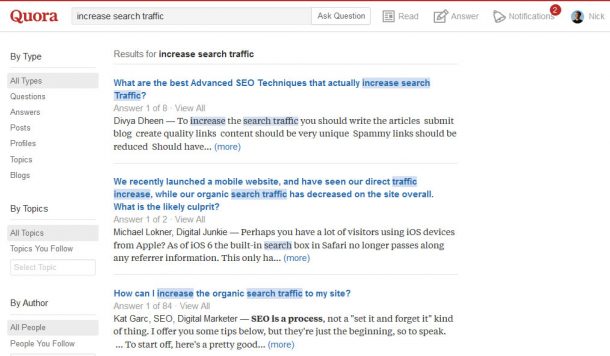
You can copy and paste some of the questions as they are and use them as blog post titles directly. Yet, ven if that is not the case, you are sure to find loads of inspiration for blog post topics.
A similarly good place for user research is Reddit which has communities for just about any topic. If you find relevant subreddits and listen to the discussion, you will garner loads of insight into people in your niche.
Finally, you can also mine the search queries others type into Google. Several tools out there collect information from the autosuggest feature in Google and can give you ideas for content as well as long-tail keywords. Check out Übersuggest, Keyword Tool and AnswerThePublic. You won’t be sorry.
2. Create and Optimize Landing Pages
When someone clicks on one of your links in the search results, where do they land? Chances are on your homepage, a blog post or similar part of your website. However, especially when your goal is lead generation and/or sales, it’s often better to use a landing page instead.
What is a landing page? How is it different?
A landing page is a dedicated page for one topic that has a particular goal. There are a number of websites out there who use them very successfully. In fact, in their definitive guide on WordPress SEO, Team Yoast recommend to turn your most important posts into pages (the guide itself is also a page, btw).
Copyblogger Media also create landing pages on a number of popular topics that gather them loads of links and attention.
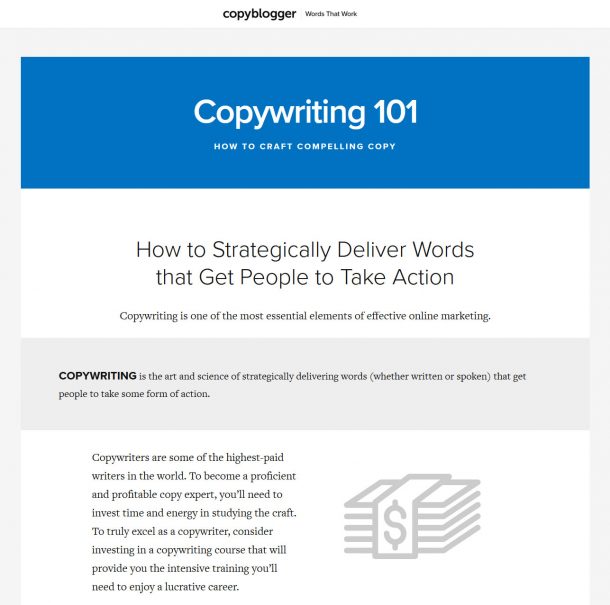
Both companies are hugely successful and you can model their behavior easily. When you do, follow this process:
- Pick a long-tail keyword to build a page for
- Add title, meta description, keywords
- Include at least 2000 words (that’s the sweet spot to rank high on Google)
- Invest in professional design
- Include testimonials (if appropriate)
After that, you still need to invest in link building in order to rank high. However, once you have reached a certain level, it will be hard to push you off the throne.
3. Repurpose Content
We all know that content is king and many of us keep creating new content on a regular basis for that very reason. However, even if it works, it can get pretty exhaustive.
A smarter approach is to use the same content and repackage it in different forms. After all you, have already done the research, why not use the information in the most efficient way?
For example, you can recycle blog posts as:
- Video tutorials
- Presentations
- PDFs
- Podcasts
- Infographics
Don’t think it’s possible? Well, Jay Baer from Convince & Convert regularly manages to turn one piece of content into eight. If he can do it, why not you?
Plus, there are other advantages: you can use the repurposed content to get attention on and links from highly authoritative websites like Slideshare, YouTube, Docstoc and Quora. For maximum effect, make sure the new pieces of content are as high quality as the original.
4. Update Older Content
Since we are already talking about using existing content instead of creating additional one, updating your existing posts and pages is also one of the more advanced SEO tactics.
Google loves up-to-date content. It’s one of their ranking criteria and the reason why they started showing publishing dates in their search results (I personally don’t click on any article older than 2014, you?).
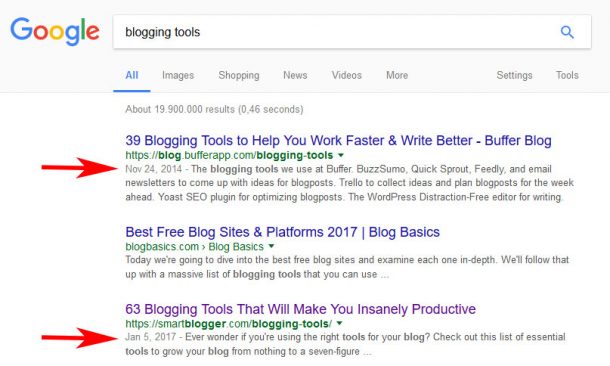
However, up to date doesn’t have to mean new, it can also mean updated. For example, you might spruce up an older post with a new introduction, additional data, new images (or infographics) or anything else that makes it more valuable.
While you are at it, slap “(updated + year)” at the end of the title to let visitors know this article is fresh (and also start ranking for search requests that include the year). When you do, don’t forget to change the publishing date within WordPress.

Does this really work? Yes. Someone who uses this SEO technique with great effect is Brian Dean of Backlinko. His blog brings in hundreds of thousands of visitors every month and has many articles on the first page or even first place of Google.
Yet, when you look at the site’s RSS feed, you see that he has only ever published about 30 blog posts in the last four to five years:

However, when you check his article on on-page SEO that published in 2012/2013, you notice that the article title says “2016 Update” and that it was last modified in October last year.
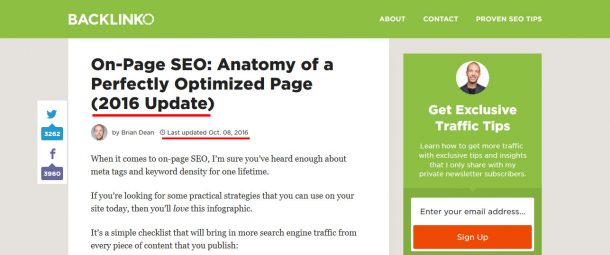
A variant of this technique is not to update entire articles but instead add new long-tail keywords to them. For that, all you need to do is check your Google Search Console under Search Traffic > Search Analytics. Here, you find search phrases that your site is already ranking for.
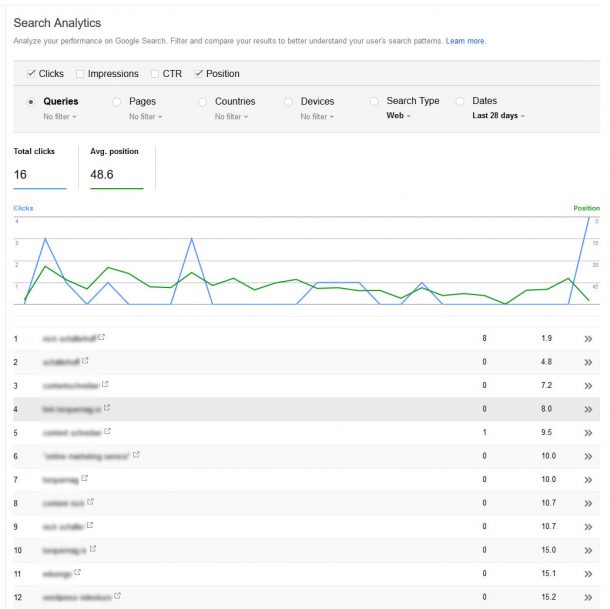
Now sort them by position and scroll down until you see everything ranking below position ten (meaning not on the first page of Google anymore). Click on the little arrow symbol to see which page ranks for this keyword. After that, edit that page and add the long-tail keyword to the content. Two or three times is sufficient. Do this on a regular basis (every few months) and you are bound to increase your traffic significantly.
5. Add Unique Content to Archive Pages
WordPress automatically creates all sorts of archive pages for categories, tags and other things. If done right, you can turn them into highly authoritative pages.
How? Well, the first step is to add unique content to them. Without, they run the danger of looking very similar to your main loop, which Google might interpret as duplicate content.
Doing so is simple. Just go to Posts > Categories and click on one of the entries. When you do, you get the option to edit the name, slug and, most importantly, description of your category.
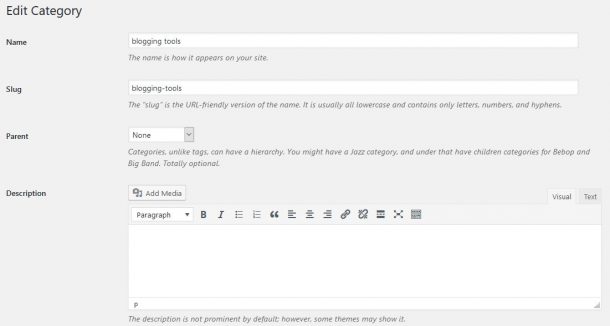
Depending on your theme, whatever content you add to your description will show up on top of the archives page — the perfect opportunity to add some unique content. (If your theme doesn’t display the category description, make sure to change the page template accordingly.)
What’s more, if you have Yoast SEO installed, you can even use their content analysis tool to further optimize the page with an SEO title, meta description and more.
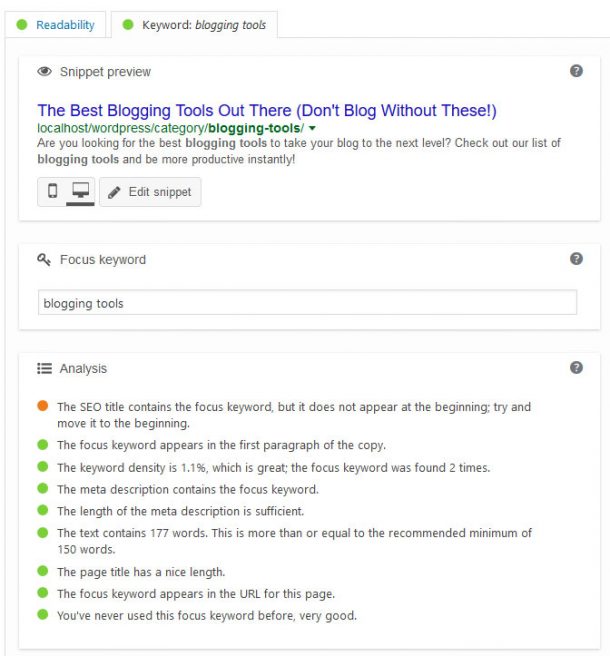
A website that does this with great success is WPBeginner. Their plugins archive ranks number one for the keyword “best WordPress plugins” (even before the official WordPress plugin directory) because they used the technique described above.
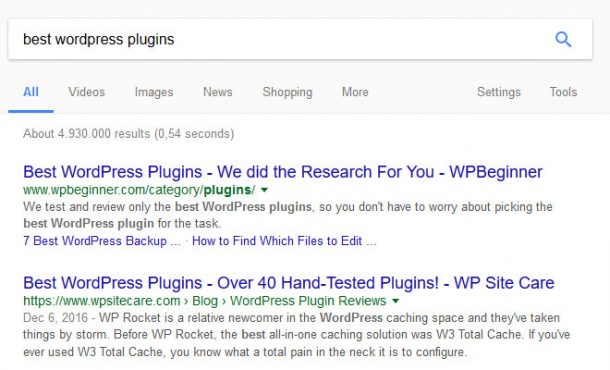
Here’s what the archive page looks like:

6. Embrace LSI
No that’s not a new designer drug. LSI stands for Latent Semantic Indexing and is something Google considers when ranking websites. In simple terms LSI means that Google pays attention to the words surrounding your keyword to figure out your the intent behind your posts and pages.
Here is an example:
When using the word apple in your content, Google doesn’t know whether you are referring to a fruit or the well-known electronics company from California. It can only determine that from the surrounding content. Therefore, if you also mention iPads, Steve Jobs, Cupertino and long lines in front of Apple Stores, the meaning will be quite clear.
LSI also considers synonyms. That means you can use different words with the same meaning to clarify your point without repeating the exact keyphrase over and over again (or what is also known as “good writing”). It’s also a way to avoid keyword stuffing.
For example, in this article instead of always talking about “SEO tactics”, I will also mention “SEO techniques”, “SEO methods” and other variations. This will make the post more reader friendly (which is the intent behind LSI in the first place) and allow me to include more keyphrases.
If you are not too adept at this, you can always use a thesaurus. Also, with some brain storming, I’m sure you can figure out words related to your main keyword that users would be looking for.
At the same time, be sure not to overuse LSI, since that is just as bad as keyword stuffing. Always concentrate on making the content flow naturally. The goal is to improve the quality of your content for the user, not diminish it in order to appeal to search engines.
Are You Ready to Put These Advanced SEO Techniques Into Action?
Advanced SEO tactics allow you to increase traffic, improve search rankings and make your content more appealing to both readers and search engines.
From extensive user research, creating and optimizing landing pages over repurposing and updating content to leveraging archive pages and using LSI, there is a lot you can do beyond merely filling in the search snippet.
However, it’s important to keep in mind that the goal is always the end user and creating unique and high-quality content for them. The techniques described here are not a way of gaming the search engines but just approaches to help you improve your web content.
